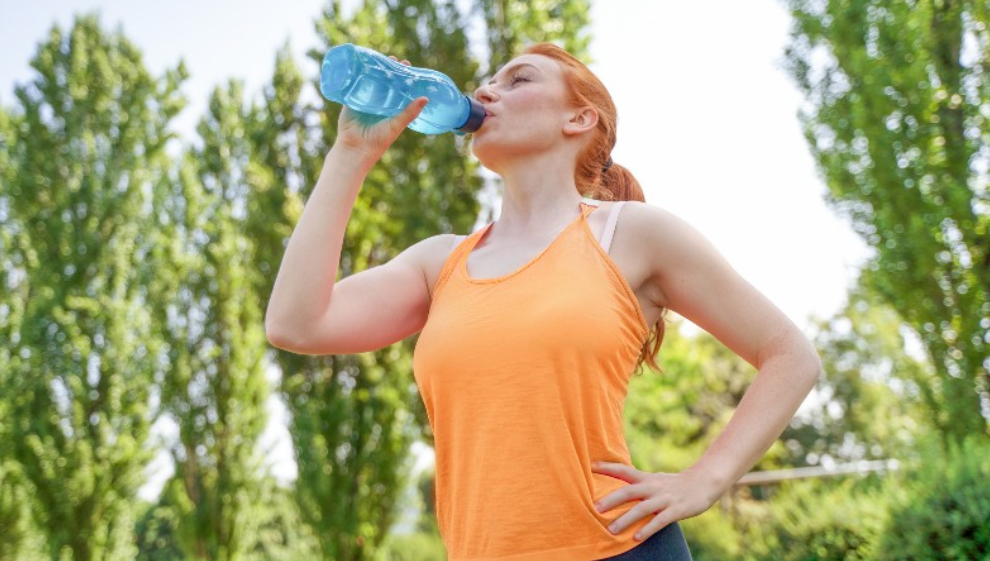Exercising in the heat | Top tips for safely working out in a heatwave
Whether you’re a runner or you prefer high-intensity fitness classes, the effects of heat on the body can linger for hours after we stop exercising. You might feel fine when exercising only to find yourself tired, lethargic, and unable to concentrate later in the day.
It’s important to understand the effect heat has on the body so we can safely prepare and workout without incident. With the help of Nuffield Health wellbeing personal trainer Kay Miyake, we’ve put together a list of our top tips for safely working out in a heatwave.
What is a heatwave?
A heatwave is a prolonged period of hot weather that sees temperatures soar above what’s typically expected in a particular region. The exact definition of a heatwave can vary depending on the climate in a specific area. In the UK, a heatwave can see temperatures soaring above 35°C, making it difficult to sleep and exercise safely.
I don’t want to exercise outside
If you’re concerned about soaring temperatures impacting your usual outdoor routine, we have a wide range of free at-home workouts on offer for all abilities. Take a look at any of the classes below to find out more:
- 10-minute low intensity indoor core workout
- 20-minute HIIT indoor workout
- 20-minute abs and back indoor workout
- 30-minute full-body indoor workout
- 45-minute full-body pump and core indoor workout
The benefits of working out in a gym
Working out in a Nuffield Health fitness and wellbeing centre means getting a workout in without worrying about overheating in the sun. All our centres are air-conditioned, making them the obvious choice for days where venturing outside is not an attractive option.
Prioritise hydration

Staying hydrated means that you’re taking on enough water throughout the day, not just when you’re exercising.
A great way to stay hydrated is to find out how much fluid you need and spread it out evenly throughout the day. Doing this means you avoid playing catch up right before or during your workout.
During a heatwave, you are going to sweat more when you exercise. Make sure to drink water every 15-20 minutes, even if you don't feel thirsty.
Planning ahead and drinking small amounts before you think you think you need it helps you avoid burnout and prevents your muscles cramping up.
Listen to your body and recognise warning signs
Working out during a heatwave is much harder than working out in cooler weather. So if you aren’t quite hitting the levels you’re used to, don’t panic. It’s likely not due to your performance regressing or that you’re losing fitness. High temperatures increase stress on the body, making it harder for us to perform at our best.
To make things easier, adjust the intensity or duration of your workout depending on how you’re feeling. For example, you could swap your usual long run for an intense shorter one. Or take that challenging midday HIIT workout and replace it with some relaxed yoga or an indoor core workout. The great thing about a heatwave is it forces us to adjust and explore new ways of working out.
Heat-related illnesses can be serious, so it's crucial we listen to our body and recognise the signals when exercising in high temperatures. Pay attention to symptoms like dizziness, nausea, rapid heartbeat, excessive fatigue, or cramping. If you experience any of these signs, stop, find shade, and rehydrate.
Properly protect your skin
When exercising outdoors, protecting your skin from harmful UV radiation is crucial. Apply a broad-spectrum sunscreen with an SPF rating that’s suited to your skin type at least 15-30 minutes before you start exercising. Make sure all exposed areas are covered and that you reapply every two hours to avoid sunburn. If you sweat excessively or are taking part in a long, endurance session, you may need to reapply more frequently.
Stay out of the midday sun

The sun is generally strongest between 11am and 3pm. During a heatwave, we recommend avoiding these hours and exercising earlier or later in the day.
This helps you avoid peak temperatures and reduces the risk of you getting burned and developing conditions like heat exhaustion or heatstroke. Checking your local weather forecast goes a long way when adjusting your workout timings during summer.
If you do venture out at midday, find a shaded area to protect yourself from the sun wherever possible and follow our guidance on hydration and protecting your skin against the sun.
Choose suitable clothing to stay cool and comfortable
Wearing the right clothes when temperatures soar really helps regulate your body temperature. Thin, breathable layers help prevent you from overheating whilst also allowing perspiration and air to pass through the garment. Avoid heavier cotton garments which promote the build-up of sweat. Instead, choose lightweight moisture-wicking fabrics that are specifically designed for active wear.
Another thing to consider is the colour of your workout gear. Light-coloured clothes help reflect the sun's rays rather than absorbing heat. If you’re venturing out with the sun beating down on you, finish your outfit with a wide-brimmed hat and sunglasses to protect your face and eyes from direct sunlight.
Manage your rest and recovery
Allow your body ample time to rest and recover after exercising in a heatwave. High temperatures put extra stress on our cardiovascular system, so it's important not to overexert yourself. Schedule regular rest days to promote recovery and prevent exhaustion.
You should also make sure that you’re getting enough good quality sleep when a heatwave strikes, as REM sleep plays a crucial role in your body's ability to repair and rejuvenate properly.
Exercising in hot temperatures can be invigorating and even beneficial. It pushes us to work harder and move through discomfort, however it does require a conscious effort to think more about safety. With these tips, you can quickly and easily adapt and adjust your exercise routine during a heatwave, leaving you to enjoy a good workout in the sunshine.
Last updated Thursday 11 July 2024
First published on Tuesday 18 July 2023

